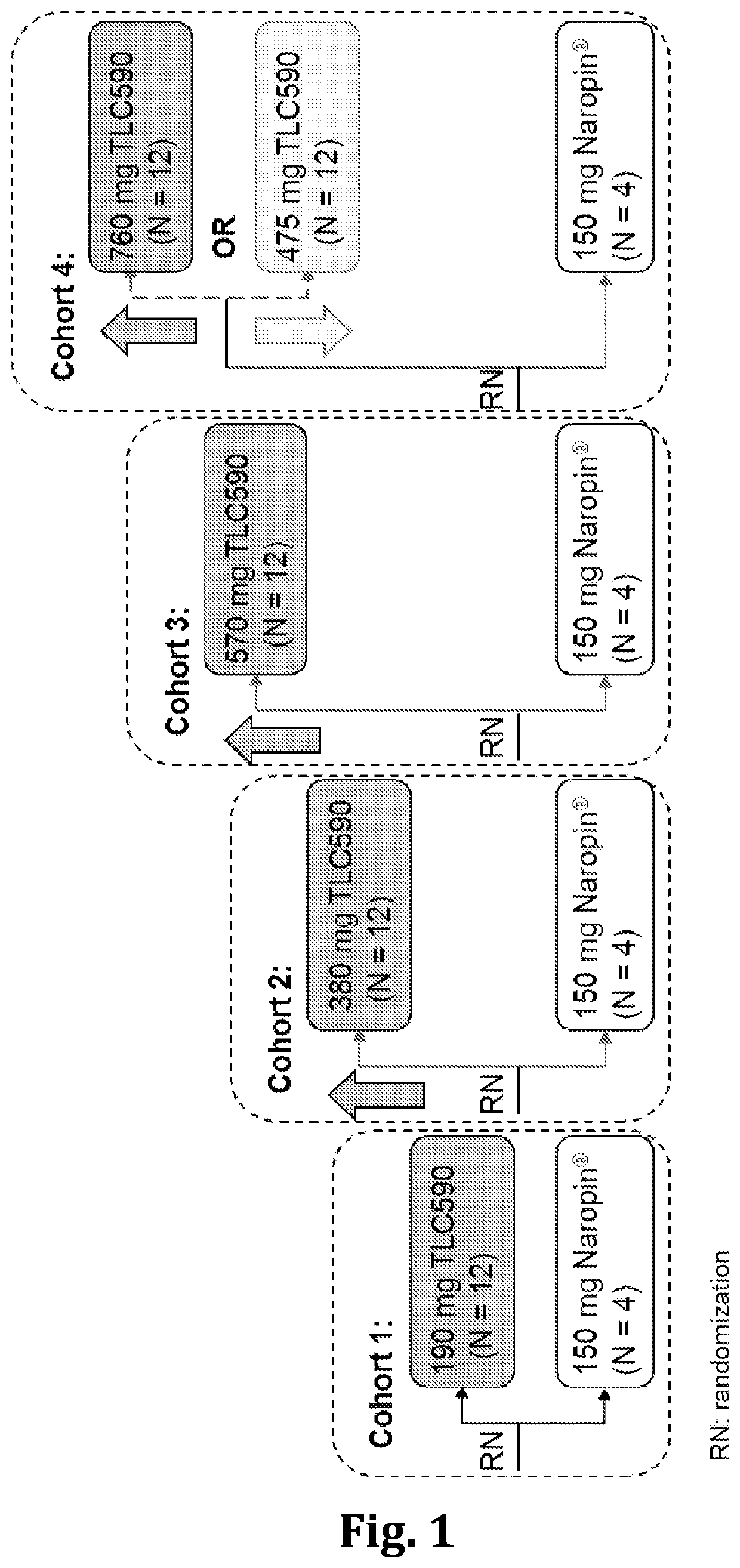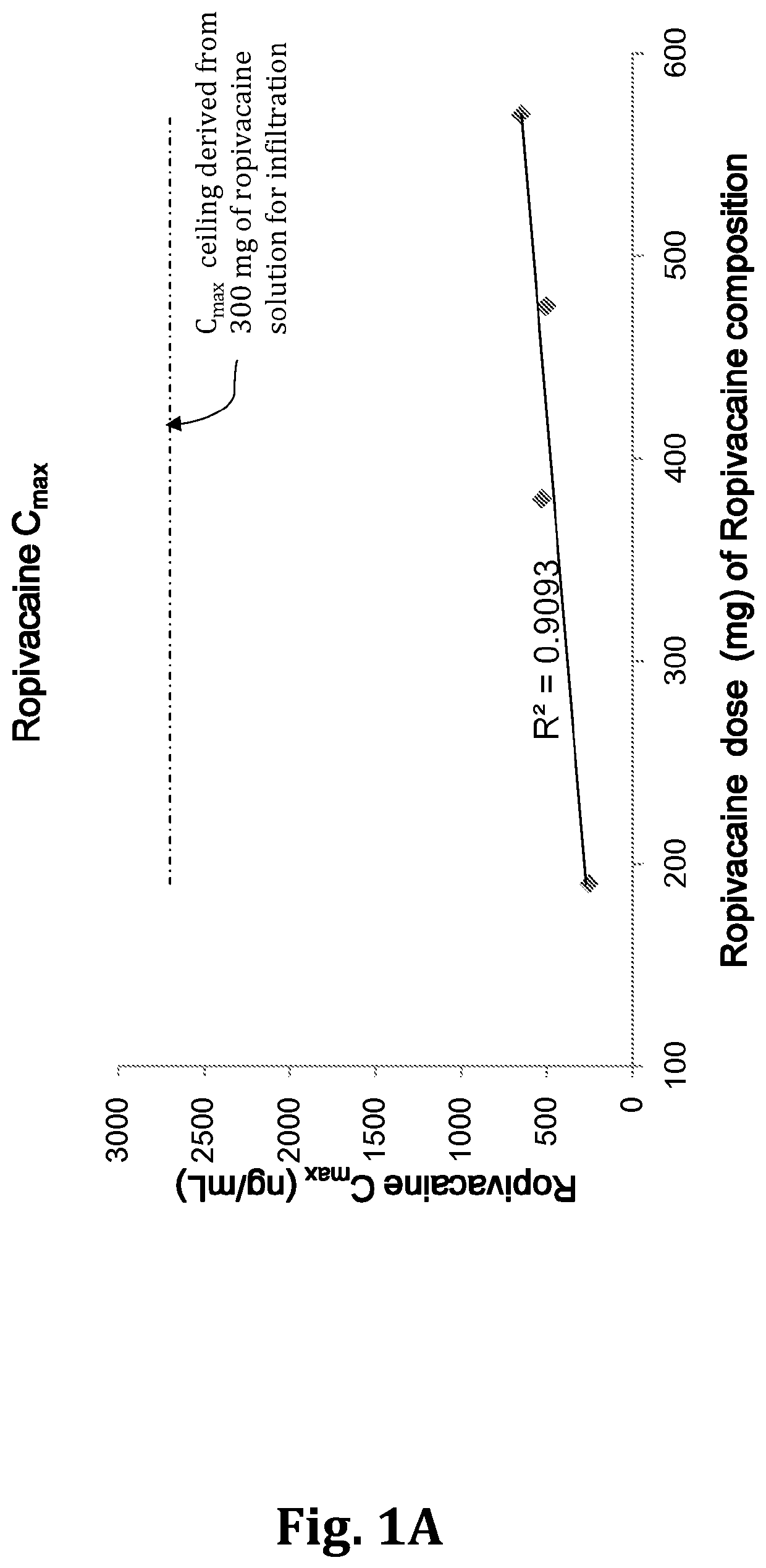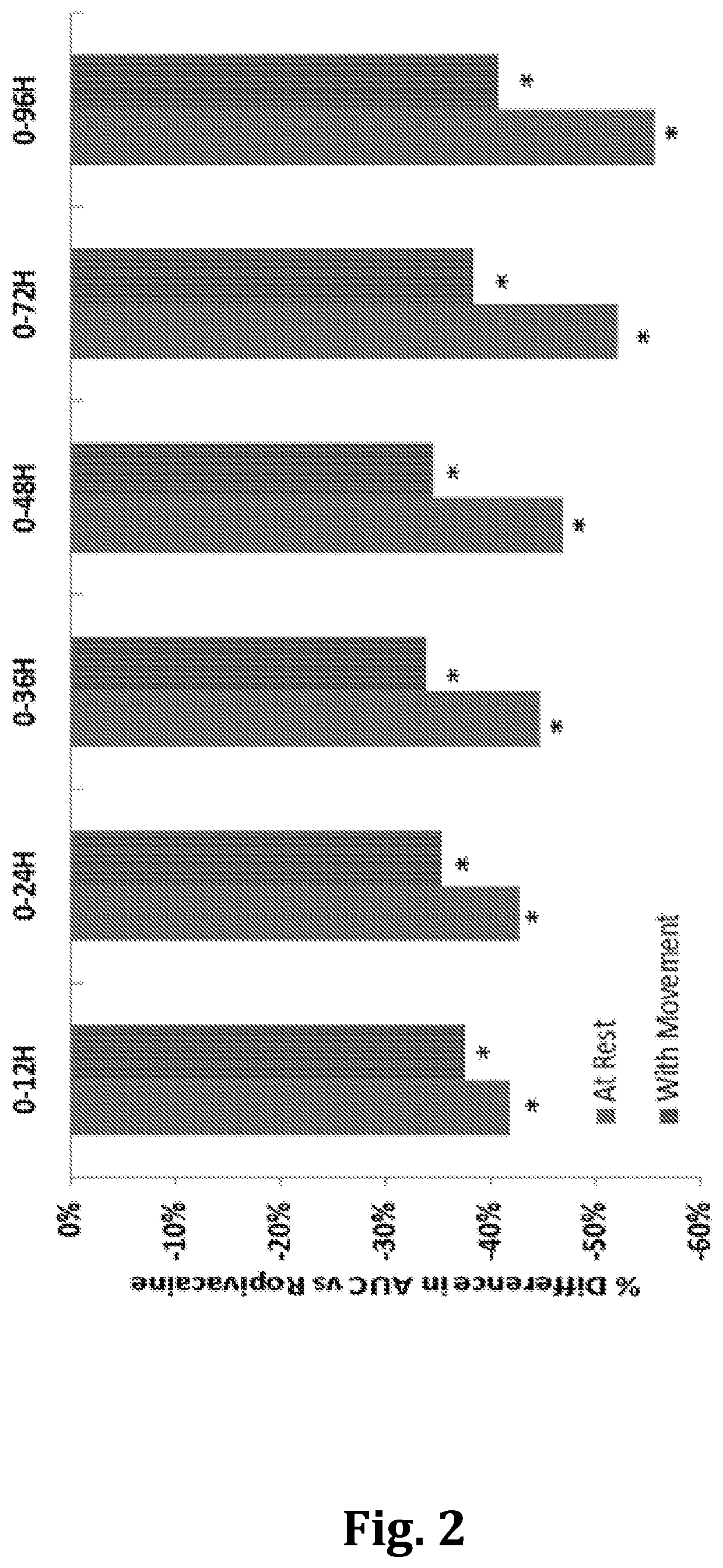Pharmaceutical compositions for use in treating pain
a technology of pharmaceutical compositions and anesthetics, applied in the direction of drug compositions, organic active ingredients, powder delivery, etc., can solve the problems of insufficient coverage of significant recovery time, limited duration of postsurgical analgesia with local anesthetic agents, so as to reduce the undesired effects of amide-type, prolong and reduce the effect of pain control
- Summary
- Abstract
- Description
- Claims
- Application Information
AI Technical Summary
Benefits of technology
Problems solved by technology
Method used
Image
Examples
example 1
Preparation of Anesthetic Compositions
[0059]1,2-dimyristoyl-sn-glycero-3-phosphocholine were purchased from NOF Corporation (Tokyo, Japan) or Lipoid GmbH (Ludwigshafen, Germany) Cholesterol was purchased from Sigma-Aldrich (Darmstadt, Germany) or Dishman Pharmaceuticals and Chemicals (Gujarat, India), and ropivacaine was purchased from Apollo Scientific (Cheshire, UK) or Dishman Pharmaceuticals and Chemicals. All other chemicals were purchased from Sigma-Aldrich.
[0060]To prepare the lipid cake, ropivacaine was combined with a lipid complex as indicated at a drug-to-phospholipid ratio (D:PL) of 1.458 μmol / μmol, i.e, phosphocholine:cholesterol:ropivacaine=2:1:2.9. The lipids and ropivacaine were mixed and then dissolved in tert-butanol or a tert-butanol / water cosolvent system (1 / 1, vol / vol) to form the liquid structure. The liquid structure was frozen and then was lyophilized overnight to obtain a lipid cake of the amide-type anesthetic.
[0061]To prepare the lipid structures for the ve...
example 2
Treatment of Pain in Adult Subjects Following Inguinal Hernia Repair Surgery
[0066]A Phase I / II, randomized, double-blind, comparator-controlled, dose-escalation study to assess the safety, PK, and efficacy of single postsurgical application of the anesthetic composition in accordance with the present disclosure (denoted as TLC590) compared with Naropin® via a single infiltrative local administration in adult subjects following inguinal hernia repair surgery.
[0067]The study enrolled approximately 64 evaluable subjects who met all entry criteria across 4 cohorts. Dose escalation of a single postsurgical administration of TLC590 was performed using sequential dose levels, as compared with Naropin®. Dose-escalation were determined by review of treatment-related adverse events (TEAEs) and all serious AEs (SAEs) by a safety monitoring committee (SMC).
[0068]Inclusion Criteria were listed as below:[0069]1. able and willing to provide a written informed consent;[0070]2. male or female betwee...
example 3
Treatment of Pain in Adult Subjects Following Bunionectomy Surgery
[0100]A Phase II, randomized, double-blind, comparator- and placebo-controlled study had been conducted to assess the safety, PK, and efficacy of single postsurgical application of TLC590 compared with Naropin® or bupivacaine and placebo via a single infiltrative local administration in adult subjects following bunionectomy surgery.
[0101]Approximately 223 eligible subjects were enrolled in this study. The study was divided into two parts:[0102]Part 1: Blinded Pharmacokinetics of TLC590 and Naropin®, approximately 48 subjects were randomized at a ratio of 1:1:1:1 to treatment with TLC590 152 mg (8 mL), TLC590 190 mg (10 mL), TLC590 228 mg (12 mL), or Naropin® (50 mg; 10 mL). Randomization schedule was assigned by a centralized interactive web response system (IWRS). An unblinded interim analysis was performed to review the safety, efficacy, and pharmacokinetics of the 3 doses of TLC590 and Naropin® in Part 1 of the tri...
PUM
| Property | Measurement | Unit |
|---|---|---|
| median diameter | aaaaa | aaaaa |
| pH | aaaaa | aaaaa |
| mole percentage | aaaaa | aaaaa |
Abstract
Description
Claims
Application Information
 Login to View More
Login to View More - R&D
- Intellectual Property
- Life Sciences
- Materials
- Tech Scout
- Unparalleled Data Quality
- Higher Quality Content
- 60% Fewer Hallucinations
Browse by: Latest US Patents, China's latest patents, Technical Efficacy Thesaurus, Application Domain, Technology Topic, Popular Technical Reports.
© 2025 PatSnap. All rights reserved.Legal|Privacy policy|Modern Slavery Act Transparency Statement|Sitemap|About US| Contact US: help@patsnap.com



